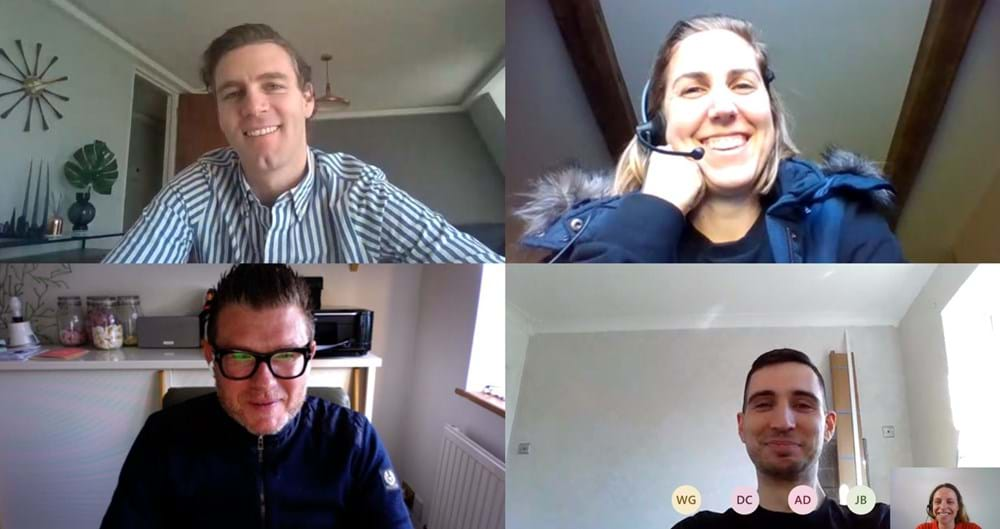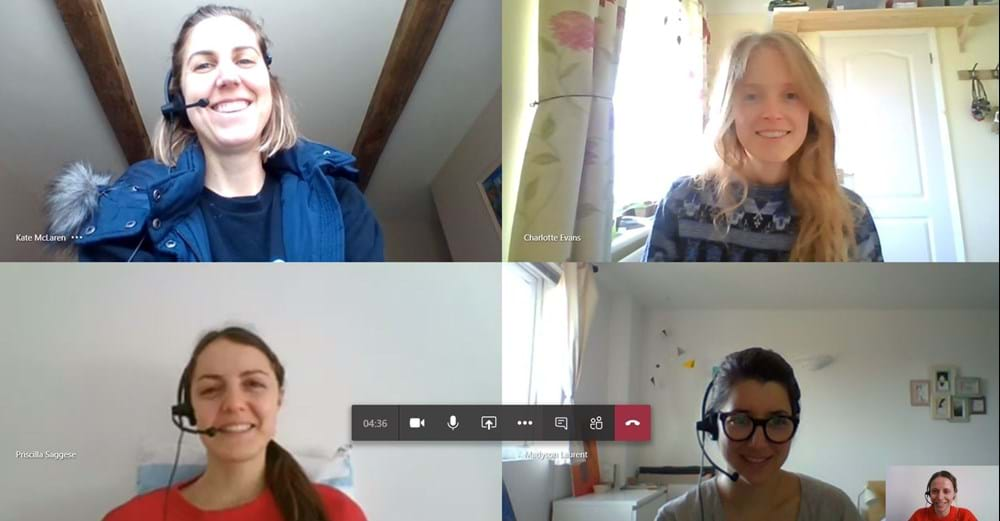To work from home, or to work from the office...that is the question.
Are we on the cusp of working from home becoming new norm? Although people have been talking about flexible working in one way or another for decades – we may now be at the tipping point where work takes on an entirely different character. Covid-19 has been elevated to pandemic status by the World Health Organization, and many businesses are now faced with the brutal reality of informing their teams to work from home in a bid to curb the outbreak and protect their workforce. Many British companies have now released emergency strategies, closing offices and limiting face to face contact.
Are we ready for this forced decision, can business cope without the physical presence of their workforce? More importantly, are your teams prepared and can they work from home?
Performance
Most companies will be aware performance will be affected by this forced lockdown. Statistically, before the Covid-19 outbreak, 79% of the British workforce worked from home 1-day per week. Only 1% work from home for 4-days or more. Surprisingly only 41% of sporadic home workers have a dedicated room or study and 39% don’t even have a dedicated desk at home.
Across the age spectrum, people under 25 years old are less affected by working from home, whereas >50 year olds are less adaptable or embracing of remote working.

Planning our next webinar!
Ability
Based on these numbers a large portion of the UK workforce are just not set up to perform their duties away from the office. We also have to accept the UK is behind the curve when it comes to supporting the trend to work away from the office. This could be down to job roles not supporting remote working, or it could be a step change that the business is just not ready for – lack of understanding, need of advice, testing, training etc…
Our current economic and health position will force the hands of many organisations to quickly adopt a new home working policy, and hastily implement IT protocols to support it.
But there are a number of barriers. For example, some office roles simply cannot be done at home, in addition IT security could be a huge factor. Meanwhile, people living in major towns and cities will be fine, whereas those living in rural areas with slow broadband and poor mobile connections will suffer.

Leeson in his WFH set up
Aptitude
Can my team be productive when they work from home? This is a question that has been asked many times over – but thanks to modern technologies more and more people are effective when away from the office.
Do all at-home workers put in the same effort when no one is watching? Probably not. There are a range of distractions you don't find in the office. The temptation to build your day around watching a cheeky re-run of Top Gear or having a few minutes to catch up with home chores.
On the other hand, think about the work you can get done without the daily commute, for the most part this is two hours per day saved. For many this figure could be more. Returning valuable time for family or the gym supporting your healthy wellbeing. But it’s not without its flaws, that can be destructive and quite demoralising. Right in the heart of Maslow’s law of hierarchy he talks of belonging and the need for social interaction. Working alone in silos, away from the office for long periods can be a lonely place. And even for the hardiest, its hard work. Interactions with team members will drop off significantly and it’s easy to start to feel disconnected.
Profile
Remote is not for everyone. It is evident there has been a steady rise in companies offering the ability to work from home. However, one has to question why its general uptake has been slow?
Simply put, not all people work in the same way. There is no such thing as a one size fits all policy, and every person is very different. All businesses are made up of two very clear worker types – Puffins and Penguins. Our Puffins, the people that naturally migrate and travel tend to be individuals that can work from alternative locations. However, a Penguin, whom cannot fly away, would by nature of the role they perform require functional, quiet and structured space to create their best work – normally the office.
Interestingly, most businesses are made up of <65% Penguins, so forcing them to act in a way that is unnatural will only cause stress and panic. Which in turn will reflect badly on performance.
 Our marketing on their daily team call!
Our marketing on their daily team call!
Looking Ahead
It is clear we are currently in unchartered territory, and for most businesses the short-term outlook will prove to be challenging. That said, the dust will settle and in time we will return to normal.
In the meantime, what can we do? As we eluded to at the top of the blog, very few of the UK population are set up to work from home properly and effectively. Most importantly, how can we keep our teams motivated, connected and engaged through these unprecedented times.
Here are our top tips to help;
1 – Keep the routine.
Don’t change the routine. Get up, eat breakfast and get dressed. Your attire may now be different, ditch the suit for something less formal of course. But whatever you do don’t stay in your night wear.
You will now be faced with some additional time on your hands, with no commute. Perhaps go for a walk or run – time to consider your mental wellbeing. Don’t be a slave to your computer. You wouldn’t do it in the office, so don’t start now.
2 – Don’t change your work habits
Many people will now be filled with guilt – this is natural. How can I prove to my boss I am working? Presentism isn’t everything, we now need to focus on output. Sitting for 8-hours in front of your computer doesn’t make you effective, you wouldn’t do it at the office. Make sure you are active, hydrated and eating healthily.
3 – Plan your day
Work out what you want to achieve, write it down and stick to the plan. Keep your diary up to date and make sure colleagues have visibility of it. Face2face meetings now turn into virtual calls. These are still meetings, so make sure users can see these and are brought up to date with outcomes and actions.
4 – Stay connected.
Have daily check-ins. There is now a myriad of apps and programs to do this. Within Office 365 Teams is the go-to platform for connectivity and chat. Google Hangouts, Slack, Facetime are just a few others.
Make sure you have video turned on – it's far more personal and engaging. Learn to love the camera, it is your friend. Some people hate it, but it can be a good way to look at your posture, expressions and body language. You are now seeing how other people see you!
5 – Avoid distractions
Turn off notifications, shut other applications and turn the TV off. Make time for a break, of course, but where possible distractions should be saved for lunchtime. Avoid the news, there is a lot of information at the moment, and regrettably, not all of it is true or correct. This can easily cause stress and panic.
6 – Avoid burnout
May sound silly given we are at home. However, with the guilt some may have of proving we are working we may be doing too much. Added with anxiety caused by constant news bulletins and balancing childcare, stress levels will quickly rise.
7 – Take a break
Avoid boredom, going to work is a release. For some that Monday morning feeling is depressing, that said, it is a break from the routine at home. Make sure you fill your time with other activities. And finish work at your normal time, spend time with the family and eat together.
Remember we are in this together.
So, will working from home become the new norm? No – our users will still need a base, a home and landing spot. Social distancing will be quickly replaced with social engagement, participation and interaction. We are creatures of habit, the need to belong and be wanted far outweighs the desire for exclusion. Our offices are a form of tribalism, and our warriors will migrate back as soon as they are permitted to.
Authored by Leeson Medhurst, Director of Workplace Strategy at Workplace Futures Group. View his latest webinar
on working from home, keeping motivated and mental wellbeing for staff here!

An opinion piece by Leeson Medhurst, Director of Workplace Strategy at Workplace Futures Group.
